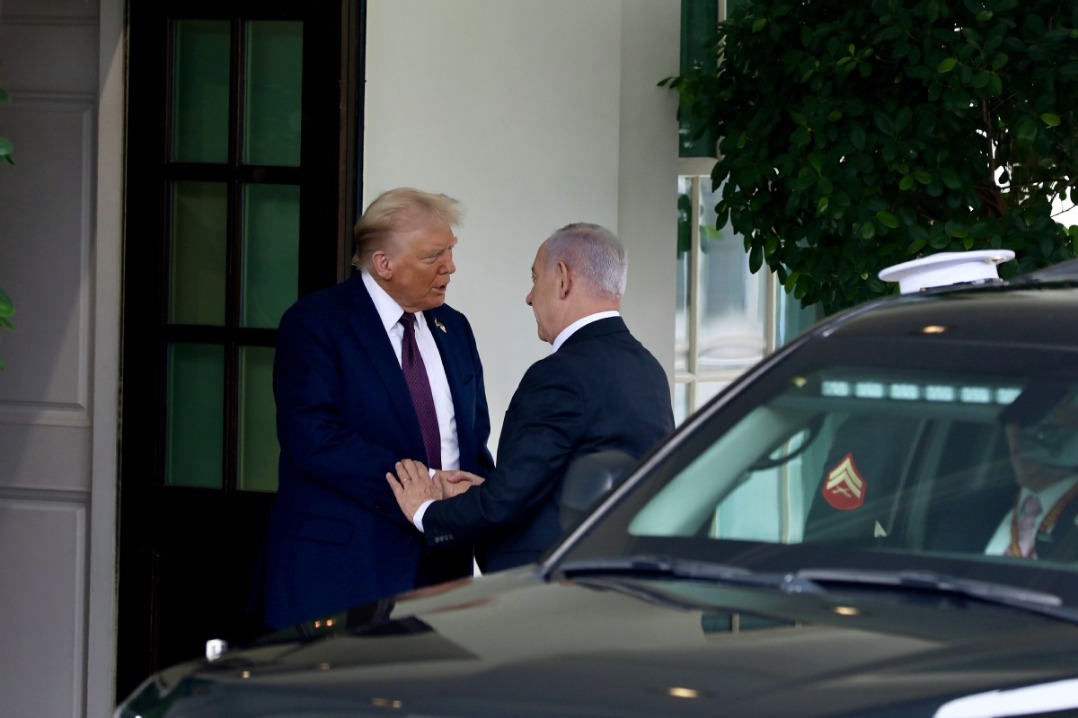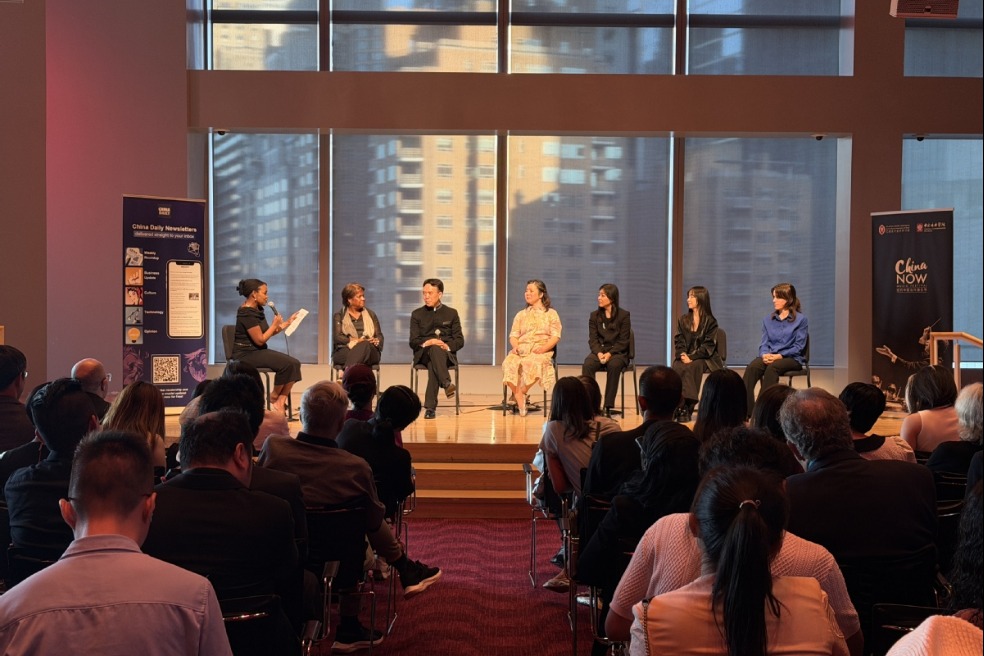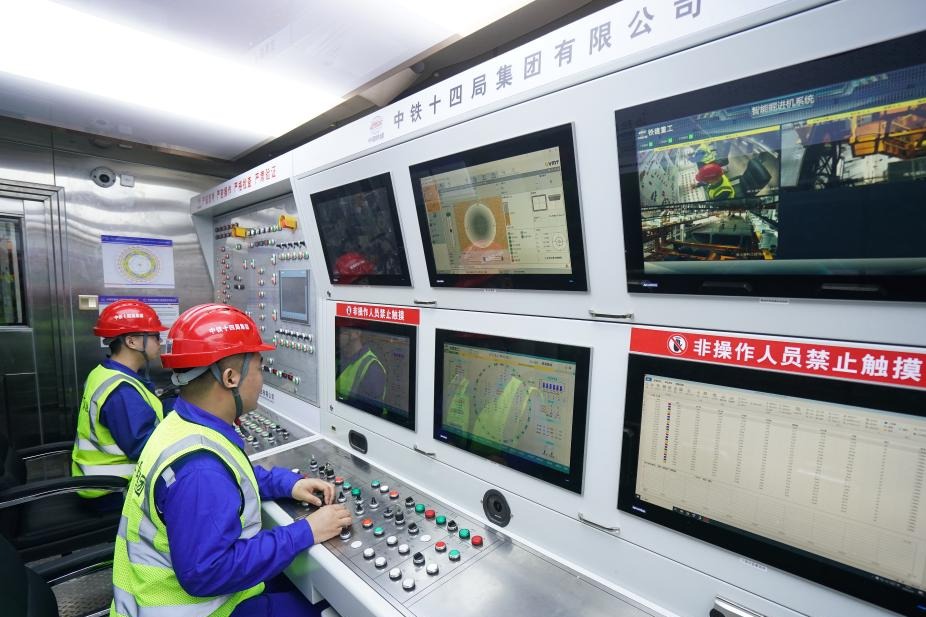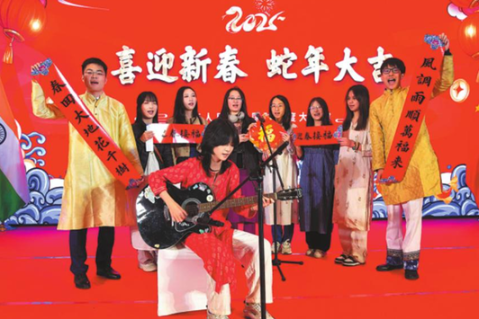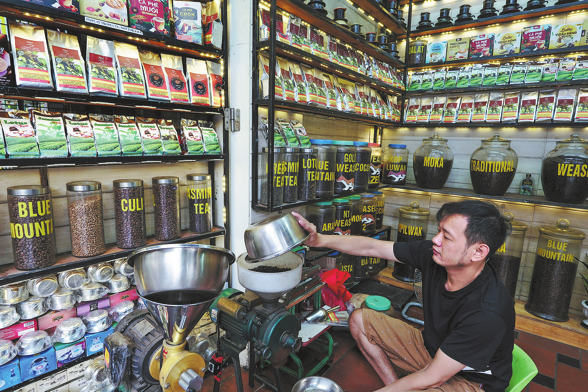Qipao shines at Chinese embassy event showcasing intangible heritage

A fashion show for qipao — a traditional style of Chinese dress — and an exhibition of Su embroidery, velvet flowers, gold foil and Chinese paintings were staged at the Chinese Embassy in the United States on Friday, highlighting China's rich intangible cultural heritage, while extending an invitation for more to discover the country firsthand.
The event, Embroidered Elegance: The Artistic Rhythm of Jiangsu, held in collaboration with the Associates of the American Foreign Service Worldwide, presented an immersive experience featuring traditional craftsmanship from East China's Jiangsu province, alongside live music and dance performances.

Wearing a qipao, Wang Dan, wife of the Chinese Ambassador to the US Xie Feng, talked to the guests about the deep historical roots and fine craftsmanship behind the featured arts. The 260 visitors included representatives from US culture, education, art and business circles, as well as foreign envoys and their spouses.
In her speech, Wang noted that China's cultivation of silkworms dates back over 5,000 years, and the artistic traditions showcased at the event — from embroidery to velvet flowers — all begin with silk.
A baby silkworm, she noted, spins silk only after eating mulberry leaves for about 20 days and shedding its skin four times, and a fingertip-sized piece of silk requires a pound of mulberry leaves. Masters of Su embroidery can split a single silk thread into 128 strands, while creating super-thin gold foil demands "thousands of strikes and precise cutting."
"It is amazing how a strand of silk, finer than a human hair, could weave the rich tapestry of Chinese civilization," she said.
Wang focused especially on the qipao, calling it "a shining example of harmony in diversity." Originating as the ethnic attire of Manchu women, the qipao evolved into an iconic Chinese garment after merging elements of Central Plain culture, and since the 20th century has incorporated Western draping techniques.
With its dignified standing collar, an elegant, slanted front and dynamic side slits, the qipao "embodies the gentleness, grace and strength of Chinese women," she said.
She also highlighted the global influence of Chinese textiles and design. As early as the Western Han Dynasty more than 2,200 years ago, Chinese silk traveled overseas along the ancient Silk Road and shaped Western aesthetics.
At the 1933 Chicago World's Fair, she said, the qipao "took the world by storm." Today, Su embroidery, velvet flowers and the qipao remain highlights on international fashion stages, reflecting continuity and innovation.
She encouraged guests to explore China's living traditions in person, noting that China has extended its 240-hour visa-free transit policy to 55 countries, including the US, and that the upcoming China Consular Affairs app will streamline visa applications.
"Today's experience session offers only a taste of our culture," she said. "I'd like to encourage you to visit China, and discover much more about our culture, fashion and art."
Many participants at Friday's event donned a qipao, or tried one at the site.
"I've never seen one so beautiful as this one. It just makes me feel really elegant and like I to have some part of history, you know, to share, and a story to share," said US mezzo-soprano Carla Canales, who wore a bright, vivid red qipao featuring an embroidered peony design.
Canales, also a cultural diplomat and arts advocate, said she considers the qipao a timeless garment. "It's something that has obviously a long history, but is also very elegant today. I could see myself wearing it in the United States at events, or internationally," she told China Daily. "I wear them everywhere I go."
Anna Maria Larsen,founder and managing partner of Lumenis Partners, praised the qipao's blend of heritage and modernity.
"My first impression is just the pure beauty, and the traditional look from the rich Chinese culture," Larsen said. "It's definitely the mix of tradition and modernity. It's taking the past to the present into the future, which is culture."
Larsen added that she enjoyed wearing international fashion and would happily wear a qipao "for a lovely, elegant evening," calling it "a global fashion."
Susan Pillsbury, who first traveled to China in 1979, said she has watched the country's cultural influence grow for decades.
Pillsbury added that the qipao has become part of her family traditions. "My granddaughter has a qipao, my daughter-in-law has a qipao, my mother has a qipao," she said. "We all wear them — sometimes at Christmas time or Thanksgiving time — when we want to dress up really unusually and beautifully."
















